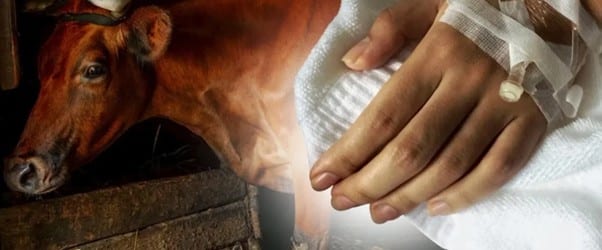Thailand confirms one anthrax death from beef consumption, 247 under medical watch
The Department of Disease Control (DDC) on Thursday confirmed one anthrax-related death in Mukdahan province, linked to the consumption and distribution of beef during a religious festival. A total of 247 people are currently under investigation.
Dr Phanumat Yannawetsakun, Director-General of the DDC, announced on Thursday (May 1) that one person had died from anthrax in Mukdahan. The deceased was a 53-year-old male construction worker with underlying diabetes.
According to Phanumat, the patient developed a lesion on his right hand on April 24 and was hospitalized on April 27. His symptoms worsened, with the wound turning black, swelling of lymph nodes under the right armpit, fainting, and seizures before he passed away during treatment.
Doctors suspected anthrax and sent samples to laboratories at the Department of Medical Sciences and the Bamrasnaradura Institute. Tests confirmed infection with Bacillus anthracis.
Initial investigations suggested that the patient had been exposed after a cow was slaughtered during a religious merit-making ceremony. The meat was later distributed and consumed within the village.
A joint disease control team from the DDC, Regional Office 10 in Ubon Ratchathani, the provincial health office, and the Department of Livestock Development investigated the incident and identified 247 individuals at risk: 28 who participated in the slaughter and 219 who consumed raw beef. High-risk contacts have been given antibiotics, and disease control measures are ongoing.
Anthrax is a serious zoonotic disease caused by Bacillus anthracis, whose spores can survive in the environment for years. It primarily infects ruminants such as cattle, buffaloes, goats, and sheep, and can be transmitted to humans through direct contact, consumption of raw or undercooked meat, or exposure to contaminated hides or wool.
Symptoms typically appear within 1–5 days and may include fever, nausea, vomiting, severe abdominal pain, black ulcer-like sores, and respiratory distress. Without treatment, the fatality rate can reach up to 80%.
According to the Bureau of Epidemiology, the last reported anthrax cases in Thailand occurred in 2000 (15 cases in Phichit and Phitsanulok, with no deaths) and in 2017 (2 cases in Mae Sot from handling a goat carcass from Myanmar).
In 2024, Laos reported 129 cases and one death; in May 2023, Vietnam recorded three outbreaks, with 13 cases and 132 contacts linked to beef and buffalo meat consumption.
SOURCE: https://www.nationthailand.com/news/general/40049453
Image credit: nationthailand.com










